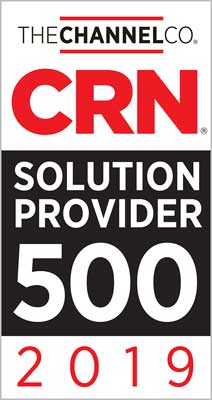As the features and conveniences of smartphones have grown,
so have the risks of using them. The more you and your employees use your
smartphones to check email, make purchases, access bank accounts, download
music, etc., the more tempting your phone becomes to hackers.
There are many different types of smartphone hacking methods
— from hacking into a live conversation or hacking into someone’s voicemail
and the data stored on smartphones. As we increasingly store sensitive data on
our mobile devices, the opportunity to hack our smartphones becomes much more
tempting to cybercriminals.
How are hackers getting to your smartphone and how can you
protect yourself and your business? Most methods used to attack PCs are also
being used to hack mobile devices.
Ways Your Smartphone
Can Be Hacked
1. Malware. Your phone is vulnerable to the same things that
once only threatened your computer, such as malware. Smartphone users often
download the malware to their phone thinking that they are downloading a
legitimate application such as the latest game or application.
2. Phishing, or SMiShing, uses text messaging to bait you
into disclosing sensitive personal information. You may receive a text message
posing to be your banking institution requesting that you call a phone number,
or that you click on a link to enter information. You might also receive a text
message that advises you to download software to your phone.
3. Bluetooth®. Unfortunately, this ingenious technology that
makes it possible to use and enjoy the many features of mobile phones is the
same technology that makes those phones vulnerable. Bluetooth makes it easier
for you to talk on your phone while driving, use wireless headsets, and even
sync your phone to your computer. But, while you are using Bluetooth, you’re
allowing hackers easier access to your phone and the information it contains.
In general, mobile phones comprise about 60% of overall Bluetooth technology usage.
o Bluejacking: If you are using your phone in a public area,
hackers can use Bluetooth’s Business Card feature to send unsolicited messages
to all discoverable devices within that area. To protect yourself from
Bluejacking, be sure to put your phone in the “invisible” or
“non-discoverable” mode to protect it from being hacked.
o Bluesnarfing: This is a more dangerous hack that gives
criminals access to some of the information on your phone. Criminals use
special software to request information from your device, using the Bluetooth
OBEX push profile. Even if your phone is in invisible mode, hackers can attack
your phone. However, having it in invisible mode requires the hacker to guess
the name of your device — making this type of hack less likely.
o Bluebugging: The electronic business card feature in
Bluetooth can also be used to open your phone to takeover by a hacker.
Fortunately, newer phones are pretty safe from this type of hack, but older
phones and outdated firmware can still be vulnerable.
o Back-door Entry: One of the biggest dangers is when a
hacker creates a back door into your phone, gets control of it, clones your
phone card, then uses your account on another phone. This is the hack that will
hit your pocketbook. All the usage on that other phone will be billed to you.
How to protect your
phone from hackers:
Setting up your phone to be secure is one of the first
things you should do when you get a new phone. If you or your employees have
not taken these steps, then they should right away.
Change the PIN on your voice mail
A phone that is still using the default voice mail or pairing
PIN is vulnerable to being accessed by hackers. Changing your PIN often and
avoiding PINs that may be available on the Web, such as your birthday,
anniversary, etc., is your best protection.
Make your Bluetooth more secure. Just like your computer,
your mobile phone should have anti-virus and anti-malware security software.
There are dozens available and there are many Websites that rank the software
for effectiveness. Since you access the Web from your phone, you’ll want
protection from any sites you may visit that have infected downloads or other
malware
Use caution when connecting to Wi-Fi. People who are using
devices with sensitive business information on them should use additional
caution when connecting to Wi-Fi. Business travelers, especially, often use
Wi-Fi connections at hotels or conference centers. Because most prominent
hotels and event venues are committed to maintaining the security of their
Wi-Fi users, this is typically an OK practice. However, free public Wi-Fi in
areas such as cafes and airports are often far less secure.
Here are some other
tips that will increase your phone’s security:
• Disable your Bluetooth when you aren’t using it.
• Keep your phone in non-discoverable mode.
• Avoid pairing your phone unless necessary.
• Use non-regular patterns as PIN keys while pairing a
device.
• Make sure your phone is registered with its manufacturer
so you can be sure to get updates that continuously improve your phone’s
security.
• Always enable encryption when establishing a Bluetooth
connection to your PC.
• Use a security app to increase protection on your phone.
Today’s phones hold large amounts of personal and business
data that you will want to keep secure. This data is of value to hackers, which
is why it’s important to take every measure possible to protect it. By
following the above steps, you can better avoid the dark side of mobility and
keep your important data secure.

